It’s understandable why RE+ (renewable energy plus) changed their name from “Solar Power” International. Even though solar still dominates the floor at the show, there are many other clean energy products to see!
Parked near the entrance, electric and hydrogen buses were the first products to come into view as attendees approached the show. The 60 foot articulating bus (combines two 30’ segments) from BYD comes with a 578 kWh battery (buses as community batteries), has a range of 193 miles, a top speed of 65 miles per hour, and takes about five and a half hours to recharge.
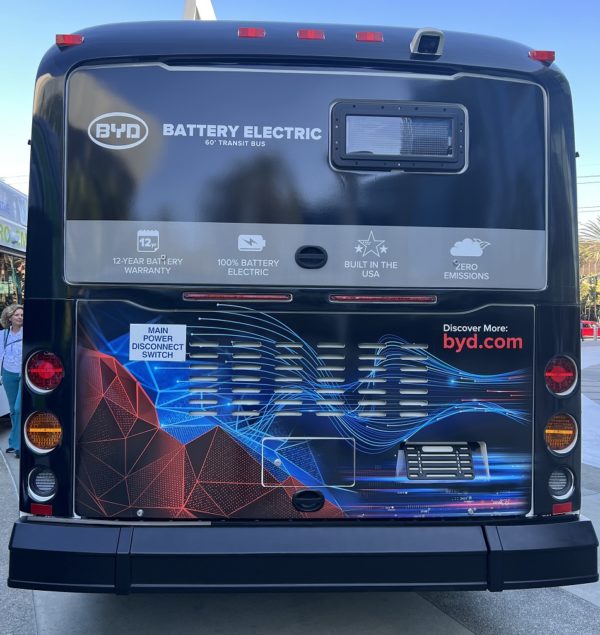
The vehicles are built in Lancaster, California.
Longi, in addition to its solar panels, also shared its hydrogen aspirations (pv magazine USA will expound on this story at a later date). A small scale mockup of their Alkaline Water Electrolyzer was on display. Longi’s LHy-A1000 5 MW was noted as their most efficient unit.
A Google search suggests 1 MW of alkaline electrolyzer can produce 100 to 200 kg of green hydrogen per hour.
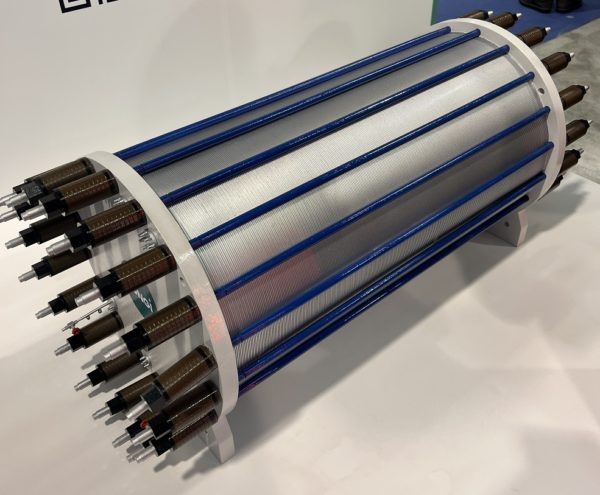
As of 2021, the company had 500 MW/year of manufacturing capacity of this product class. They’re scheduled to reach 1.5 GW this year, and they are seeking 5 to 10 GW of capacity by 2025.
While no formal pricing information was available at the booth, Bloomberg NEF recently reported that a Chinese manufacturer’s alkaline electrolyzer cost only $343/kW – a price that is expected to fall at least 30% by 2025.
GeoThinQ integrates the many tools needed to analyze a piece of land – into a fast, easy to navigate website. They provide parcel level data on wetlands, zoning classifications, jurisdictional information, and other key information developers need to make high level calls before spending more time on a site.
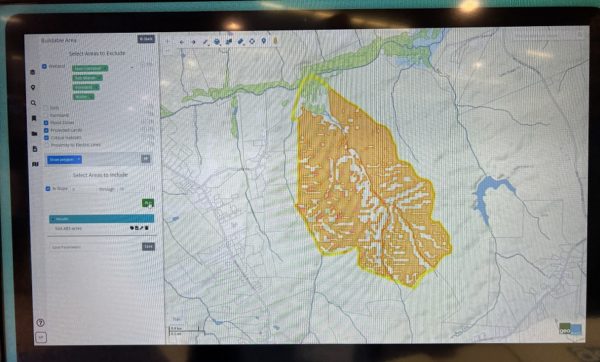
The header image of this article is Renu Robotics’ 1,100 pound lithium battery-driven electric automated electric lawn mower. When the unit finishes mowing the lawn, it returns itself to the charging station – a 12-foot by 7.5-foot building – to ready itself for its next round of work.
While charging, the unit will wirelessly connect to the company’s “Mission Control” software where owners can add additional programming to the unit, such as cutting schedules, add/remove cutting paths, and software updates.
Slick Tools was onsite with their critter guard wire mesh forming AG Bender. The unit weighs 13 pounds, outputs customizable sizes of guard material, and is listed at a price of $799.
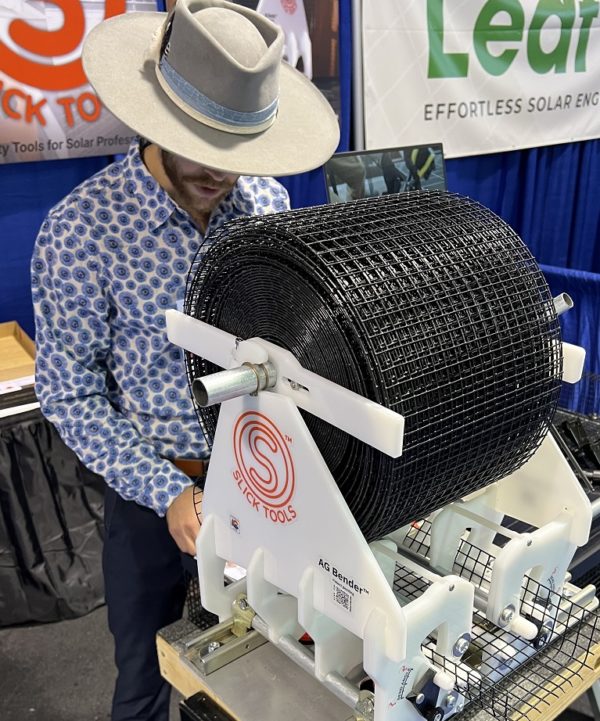
In addition to selling you the forming tool, Slick Tools has put together a solar critter job pricing guide using the hardware on their website. The tool accounts for project size, wire mesh material choice and volume, the labor to produce the product with the AG Bender, and the labor to install the critter guard.
The Capstone “Green Energy” waste gas powered microturbine can generate electricity from waste heat. The system is supposedly eligible for a 30% tax credit, so long as it is paired with the optional, integrated Combined Heat-Power system. From what we were told at the booth, the key is making use of the waste heat from the gas turbine actions to heat structures or other uses for green heat energy.
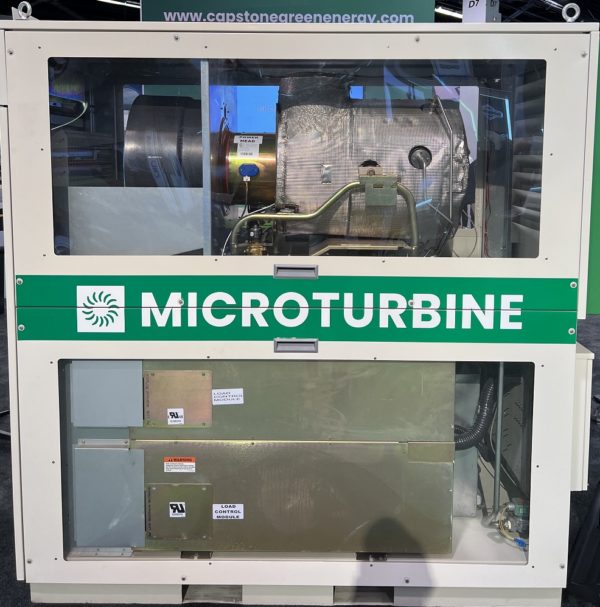
One specific use for this technology might be in location seeking to build a solar+storage+gas microgrid that uses the gas electricity as a backup to the main generation ability of the solar.
We finished the conference with a quirky device from Scott E Wyssling of Alpine, Utah who was showing off his custom built solar powered hydrogen generator/propeller thing. When he flipped the switch in the hand held unit, little bubbles appeared in the tubes and the unit’s propeller came to life.
During Scott’s 9-5 hours he does solar, structural, and electrical engineering, as well as commercial design. Wyssling is licensed in all 50 US states.
This content is protected by copyright and may not be reused. If you want to cooperate with us and would like to reuse some of our content, please contact: editors@pv-magazine.com.
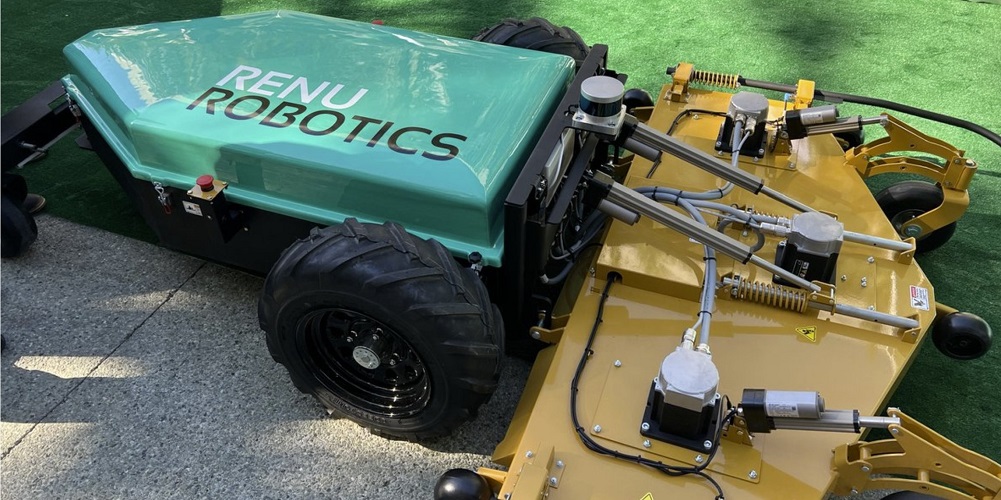








By submitting this form you agree to pv magazine using your data for the purposes of publishing your comment.
Your personal data will only be disclosed or otherwise transmitted to third parties for the purposes of spam filtering or if this is necessary for technical maintenance of the website. Any other transfer to third parties will not take place unless this is justified on the basis of applicable data protection regulations or if pv magazine is legally obliged to do so.
You may revoke this consent at any time with effect for the future, in which case your personal data will be deleted immediately. Otherwise, your data will be deleted if pv magazine has processed your request or the purpose of data storage is fulfilled.
Further information on data privacy can be found in our Data Protection Policy.